 |
Micron Pure Water Solutions - A Division of Reilly's Reliable Restoration 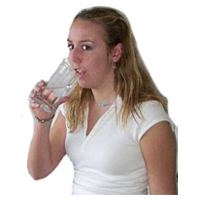 Healthier Water - Healthier Living
Healthier Water - Healthier Living
We all deserve clean and pure water to drink, but unfortunately our environments make that very difficult. In Homes, offices, factories and farms, the challenges brought on by a myriad of contaminants has never been greater. Our products bring dramatic improvements to all these environments resulting in very satisfied customers. We will continue our commitment to these customers and future customers to provide technologically advanced purification systems.
Our Professional Water Treatment systems save time and money.
What is Reverse Osmosis?
According to Merriam-Webster's Collegiate Dictionary, OSMOSIS is the "movement of a solvent through a semipermeable membrane (as of a living cell) into a solution of higher solute concentration that tends to equalize the concentrations of solute on the two sides of the membrane."
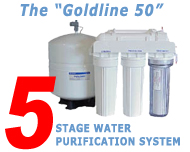
STAGE 1 - 5 Micron Filter:
Removes dirt sediments and other physical properties.
STAGE 2 - Carbon Block:
Reduces chemicals such as cholorine and ammonia.
STAGE 3 - Carbon Block:
Further reduces organics, ordours and other chemicals
STAGE 4 - Reverse Osmosis Membrane
50 Gallons / day. Membrane removes 93-97% of dissolved mineral salts and other contaminants.
STAGE 5 - Post Carbon Filter:
Final polish process that enhances and clarifies your drinking water. |  |
How does it work?
Reverse osmosis, also known as hyperfiltration, is the finest filtration known. This process will allow the removal of particles as small as ions from a solution. Reverse osmosis is used to purify water and remove salts and other impurities in order to improve the color, taste or properties of the fluid. It can be used to purify fluids such as ethanol and glycol, which will pass through the reverse osmosis membrane, while rejecting other ions and contaminants from passing. The most common use for reverse osmosis is in purifying water. It is used to produce water that meets the most demanding specifications that are currently in place.
Reverse osmosis uses a membrane that is semi-permeable, allowing the fluid that is being purified to pass through it, 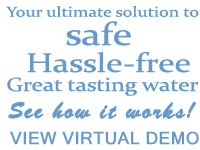 while rejecting the contaminants that remain. Most reverse osmosis technology uses a process known as "crossflow" to allow the membrane to continually clean itself. As some of the fluid passes through the membrane the rest continues downstream, sweeping the rejected species away from the membrane. The process of reverse osmosis requires a driving force to push the fluid through the membrane, and the most common force is pressure from a pump. The higher the pressure, the larger the driving force. As the concentration of the fluid being rejected increases, the driving force required to continue concentrating the fluid increases. while rejecting the contaminants that remain. Most reverse osmosis technology uses a process known as "crossflow" to allow the membrane to continually clean itself. As some of the fluid passes through the membrane the rest continues downstream, sweeping the rejected species away from the membrane. The process of reverse osmosis requires a driving force to push the fluid through the membrane, and the most common force is pressure from a pump. The higher the pressure, the larger the driving force. As the concentration of the fluid being rejected increases, the driving force required to continue concentrating the fluid increases.
Reverse osmosis is capable of rejecting bacteria, salts, sugars, proteins, particles, dyes, and other constituents that have a molecular weight of greater than 150-250 daltons. The separation of ions with reverse osmosis is aided by charged particles. This means that dissolved ions that carry a charge, such as salts, are more likely to be rejected by the membrane than those that are not charged, such as organics. The larger the charge and the larger the particle, the more likely it will be rejected. |
|
What is the RO membrane made of?
There are two types of RO membranes: Thin Film Composite (TFC) and Chlorine Tolerant Acetate (CTA). TFC membrane generally lasts longer than CTA but cannot take chlorine. If source water is chlorinated, TFC follows a carbon stage which removes chlorine.
Small RO systems range between 3 and 5 stages of filtration. |  | How does it filter the water?
 Reverse osmosis is a process in which the incoming (dirty) water is forced through a special cellophane-like RO membrane under elevated pressure. Reverse osmosis is a process in which the incoming (dirty) water is forced through a special cellophane-like RO membrane under elevated pressure. The hole size in an RO membrane is less than 0.0002 microns. |
|
What does an RO system reduce?
Reduction ratio is such that these impurities would test as non-detectable for most source water:
- Sediment filter vastly reduces dirt, sand, rust particles and other sediments
- The activated carbon filter reduces chlorine, fluoride, odor, tri-halo methane, gas additive MTBE, and organic pollutants such as pesticides, EDB, PCB, benzene and TCE.
- The reverse osmosis filter reduces cryptosporidium, giardia, viruses, tri-halo methane, ecoli bacteria, radioactive radon, ethylene glycol (anti-freeze), arsenic, copper, iron, lead, manganese, as well as dissolved chemical solids such as bicarbonate, cyanide, ferrocyanide, nitrates and nitrites
- RO membrane will stop viruses and bacteria. There is a possibility, however remote, that bacteria may grow in the post-membrane portion of the system, especially in warmer climate. If this is a concern, an ultraviolet (UV) stage is added. The UV light is designed to kill all living cells including viruses, bacteria, amoeba and protozoa.
THM. What it means?
Trihalomethanes
Is our water safe to drink?
City officers have guidelines to follow re: how much chlorine or chloramines ( Ammonia and chlorine compounds ) must remain in the water as it travels through the miles of water lines to control recontamination.
They say the bacteria is under control; Not that all harmful pollutants have been removed! These disinfectant chemicals have side effects on humans. The toxic compounds that form by combining with the decaying matter can cause cancer and other serious health concerns.
|
|
Residential Reverse Osmosis
Most people in the world are concerned about the quality of their drinking water.
In most cases water is safe to drink, but most people like to take added measures to ensure the safety of their water, as well as improve the aesthetics of their water.
A reverse osmosis systems uses a number of filters, and a reverse osmosis membrane to remove up to 99% of unwanted substances from your water.
Different people need different types of filtration systems. Ask our professionals for your water which is right for you. |  | The Goldline 50 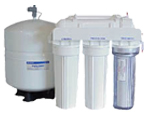
- Five Stage System.
- High flow depth type pre-filter.
- Two high flow carbon block pre-filters.
- Replaceable TFC (Thin Film Composite) membrane.
- In-line GAC polishing post filter.
- Color coded tubing.
- Long reach, air gap faucet.
- Water saving shut off valve.
- 3 year limited warranty.
- Up to 99% pure drinking water.
|
Under the sink RO system and some countertops are equipped with automatic shut-off valve. It senses when pure water storage tank is full, and shuts off the RO process. Water therefore is not wasted.
Below are some informative links to better understand water quality issues.
|
|
Ultramax Water Softener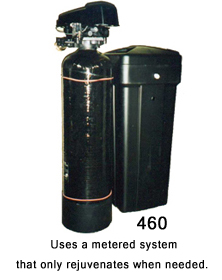 
Advanced Water treatment utilizing cutting edge technology, to deliver the highest efficiency, highest capacity system available.
- Ultramax Systems may be regenerated with either salt or potassium.
- High flow rates of up to 25gpm.
- Soft water Brine tank refill.
- Just one moving part in the water stream.
- Fully programmable cycles.
|
|
|
| FREE Estimate |
Call Mike for your
professional inspection
and
FREE estimate

or
contact us with your best call back time! |
| FREE Water Analysis | |
Benefits of
Healthy, Soft Water
- Skin and Hair
Softer skin & squeaky clean hair
- Laundry
Softer clothes, brighter colours, 50% less soap
- Facets
Taps don't corrode, humidifiers won't scale up
- Dishwashers
Spot free, sparklin glasses and cutlery
- Tubs and Showers
No soap scum to scrub
- Water Heaters
Use 30% less energy and last longer
- Save Money
Use 50% less salt. (Good for the environment)
|
Sponsored by
Ultra Max®
Water Softeners |
CALL NOW
for your FREE Water Analysis
Ask for Mike Reilly
(519) 624-8400
|
 |

 Healthier Water - Healthier Living
Healthier Water - Healthier Living
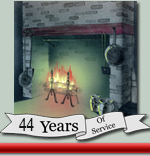


 Reverse osmosis is a process in which the incoming (dirty) water is forced through a special cellophane-like RO membrane under elevated pressure.
Reverse osmosis is a process in which the incoming (dirty) water is forced through a special cellophane-like RO membrane under elevated pressure. 







